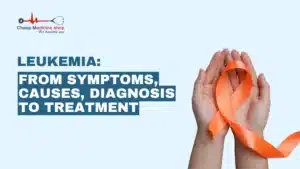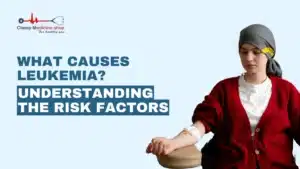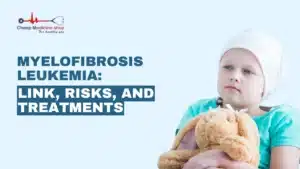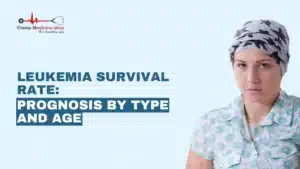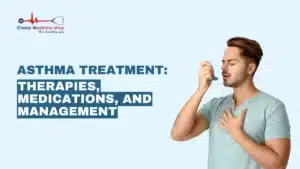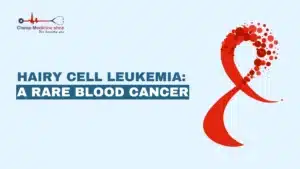It has been estimated that tobacco use or smoking is responsible for millions of deaths worldwide. Many of these deaths occur prematurely. Needless to point out that smoking is one of the most dominant lung cancer causes.
Depending on today’s data, it is estimated that casualties attributable to tobacco use will rise to around 10 million in the coming years, and almost one-third of all adult deaths are expected to be related to cigarette smoking.
We have all heard that smoking is one of the most significant lung cancer causes worldwide. In addition, smoking is a cause of various chronic diseases; primarily, it is responsible for cardiovascular and cerebrovascular disorders, chronic obstructive pulmonary disease (COPD), and cancers.
What is Lung Cancer?
Lungs are the vital organs in the human body and are responsible for multiple essential functions for survival. For example, the lungs help bring oxygen to other organs and tissues in the body and also help to take carbon dioxide out of the body.
Whenever an individual breathes, the lungs absorb the oxygen from the air and deliver it to the rest of the body. As a result, however, the organ is prone to the menace of cancer.
Lung cancer is one of the most usual types of cancer and is associated with morbidity and mortality. Cancer occurs when the cells in the lungs begin to grow uncontrollably.
It is one of the leading causes of death worldwide. According to the World Health Organisation, Lung cancer causes around 10 million deaths across the globe.
Evidence suggests that most of the patients diagnosed with lung cancer are found to be smokers. In addition, the rate of smokers with lung cancer is much higher than non-smokers.
What are the Symptoms of Lung Cancer?
Lung cancer is accompanied by a wide range of symptoms such as:
- cough with blood,
- unexplained weight loss,
- loss of appetite,
- shortness of breath,
- Fatigue,
- Chest Pain,
- Wheezing
Also Read: Deadly types of cancer
Types & Stages of Lung Cancer
Lung cancer is primarily of two types – Small cell and non-small cell. Small cell lung cancer begins in the middle of the lungs. In contrast, non-small cell lung cancer r can start anywhere in the lungs and begin to grow uncontrollably. This leads to the formation of a tumor.
Non-small cell lung cancer is further divided into adenocarcinoma lung cancer, squamous cell carcinoma, and large cell carcinoma.
There are four lung cancer stages for the non-small cell type that explain the severity of cancer:
- Stage one indicates that the cancer is found in the lungs but has not spread outside the lung.
- The second stage suggests that cancer is present in the lungs and nearby lymph nodes.
- Stage three indicates that cancer is found in the lymph nodes on the side of the chest where cancer began or on the other side of the chest.
- Stage four indicates that cancer has spread to both sides of the lungs and its nearby parts.
How Cigarette Smoking Cause Lung Cancer?
Exposure to tobacco is a significant risk factor for lung cancer. Multiple studies have investigated the association between tobacco consumption and the risk of developing cancer.
Cigarette smoking consists of thousands of chemicals. These chemicals act as poison to the body. Nicotine and tar are the most harmful chemicals in cigarette smoking.
There is evidence that intake of tar from cigarette smoke can cause damage to the epithelium of the airways. However, smoking is one of the preventable lung cancer causes. One can avoid it by quitting the same.
Chemicals like nicotine enter the lungs whenever an individual inhales the smoke, which affects the lungs’ functioning. For example, it interferes with filtering and cleaning it.
In addition, chemicals in cigarette smoke can damage the DNA, which plays a vital role in transferring genetic messages to every body cell. Any damage to DNA can lead to the uncontrollable growth of cells and result in cancer development.
In case you find it difficult to quit smoking, you can take help of nicotine replacement therapy. It includes consumption of harmless nicotine in the form of patches like Nicotinell 35 mg, Nicotinell 17 mg, Nicotinell 52 mg. Consult your doctor, he will guide you with the best dose of nicotine depending on your severity.
Don’t worry, consuming nicotine tablets and smoking ius not the same. Both contain the same ingredient but smoking increases the risk of cancer while nicotine patches reduces the crave for smoking.
How Many Years of Smoking Cause Cancer?
In clinical research, muller ascertained the amount of tobacco consumed in men diagnosed with lung cancer during a specific period consumed by healthy men of the same age. He observed that a more significant proportion of patients with lung cancer were heavy smokers; on the contrary, non-smokers were in control. Therefore, he concluded that an increase in the carcinoma of the lungs is primarily due to the rise in the consumption of tobacco.
Second-hand smoke can also be one of the potential lung cancer causes. This is because second-hand tobacco smoke also contains chemicals present in cigarette smoking but low concentrations. Although the concentration of chemicals is low, the risk of developing cancer is high.
Also, the risk of developing lung cancer in people who smoke depends on the duration of the smoke. For how long an individual is smoking and how many cigarettes he smokes per day. The more an individual is exposed to tobacco smoke, the higher the risk of developing lung cancer.
Frequently Asked Questions
Does smoking weed cause lung cancer?
There are a number of compounds in marijuana smoking that have been related to cancer. While there is no proof that smoking marijuana causes lung cancer, it does contain many of the same components as cigarette smoke. Cigarette smoking is known to cause lung cancer.
What causes lung cancer in non-smokers?
Other than smoking cigarettes, pipes, or cigars, there are a variety of risk factors that can lead to lung cancer:
Exposure to other people’s smoke (also known as secondhand smoke),
Radon,
Air pollution,
A family history of lung cancer,
Asbestos are all risk factors.
How to prevent lung cancer?
There is no one definite way to prevent lung cancer. However, one can take the following precautionary steps:
Quit smoking and avoid the presence of smoke
Maintain a healthy and active lifestyle
Exercise regularly
Test your surroundings for radon
Lung cancer is a peril to life. Though there is no sure way to prevent cancer, it can be avoided by at least giving up on smoking. The practice of cigarette smoking will substantially reduce the risk of not only cancer but also various other diseases. Smoking is one of the preventable lung cancer causes. It can and should be avoided.







